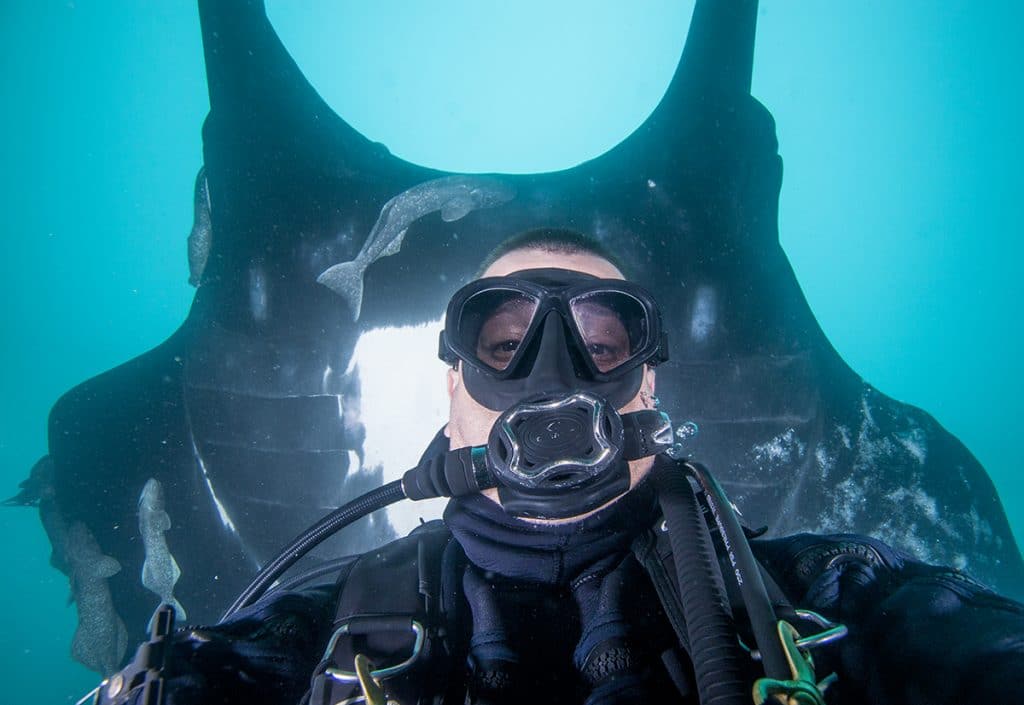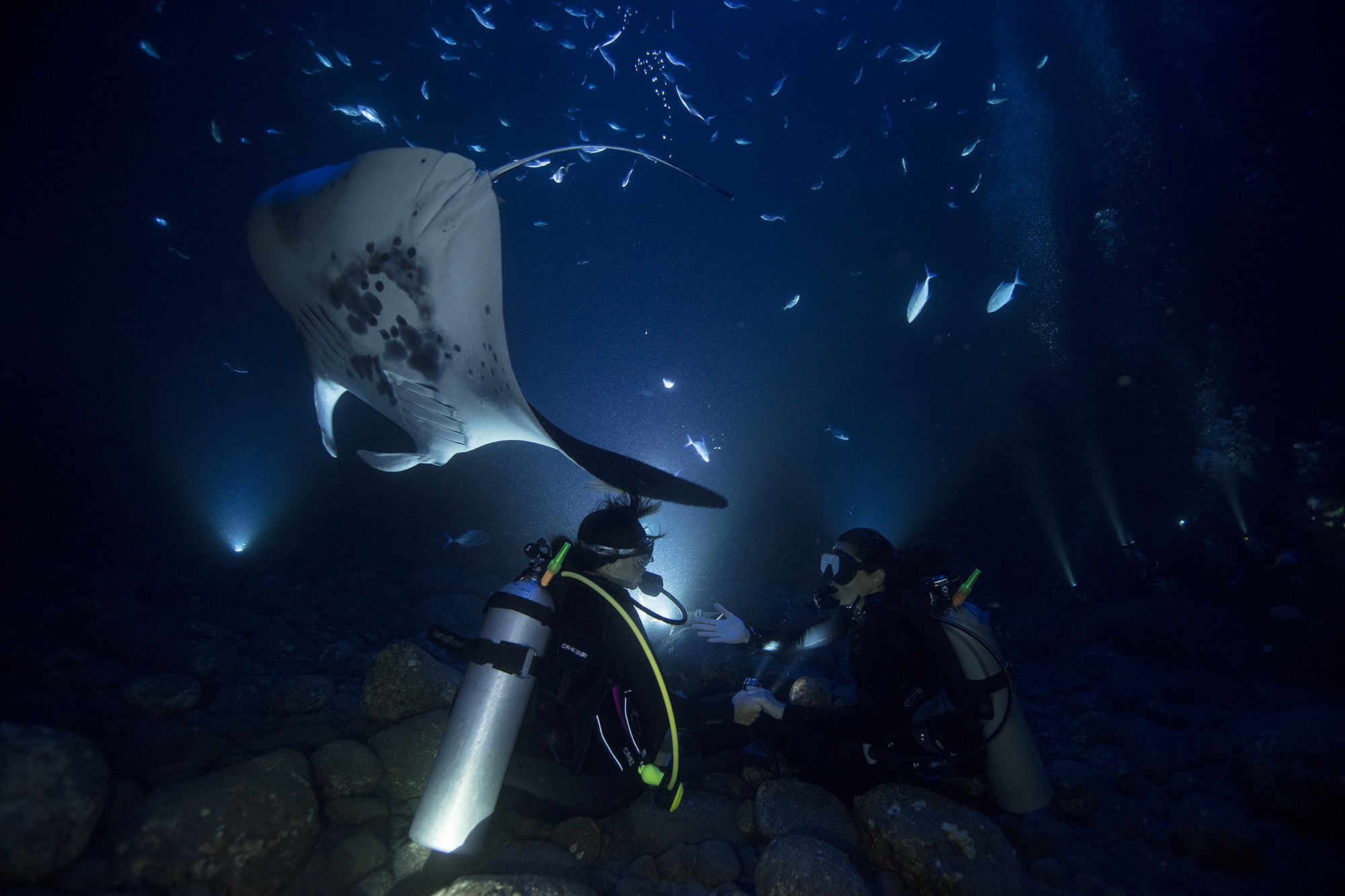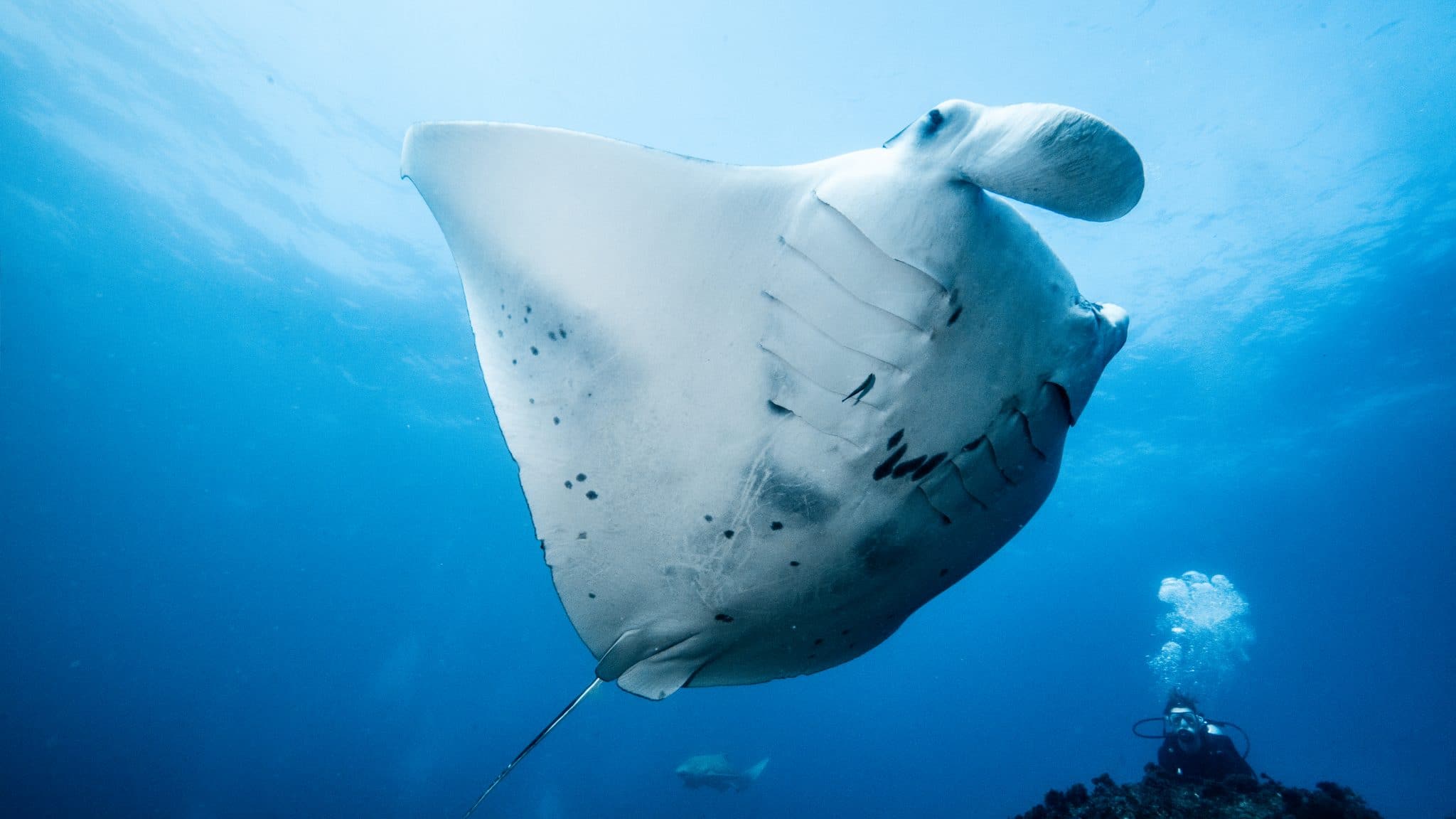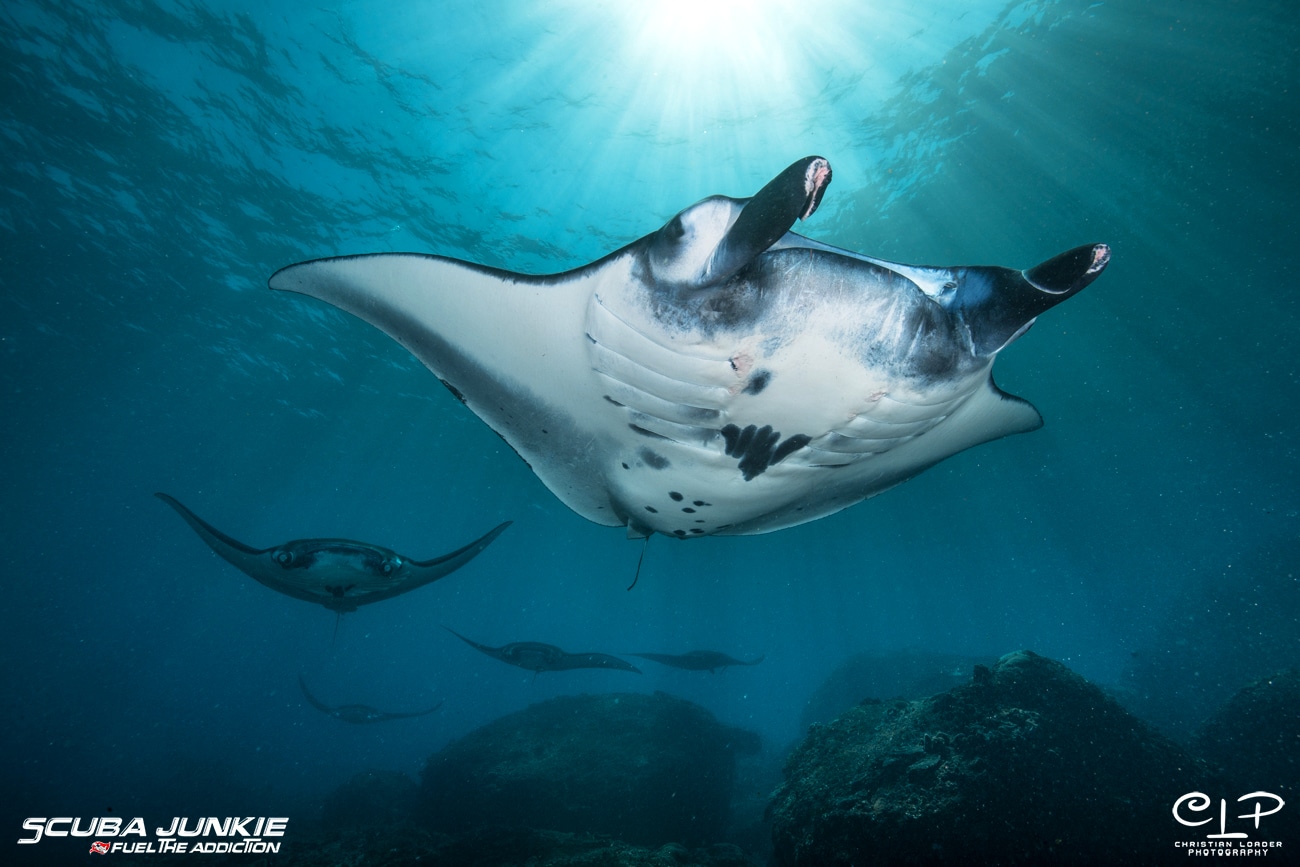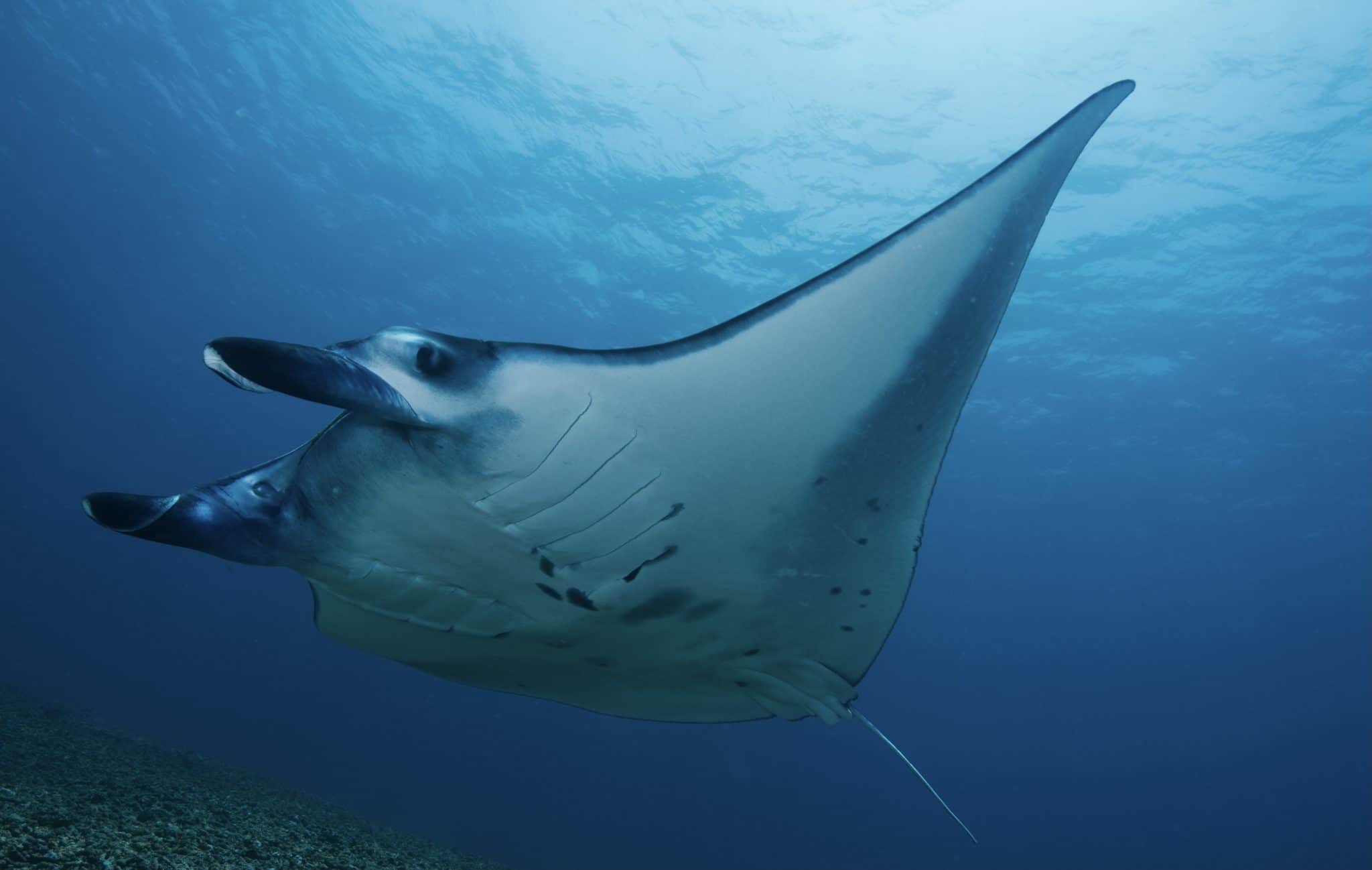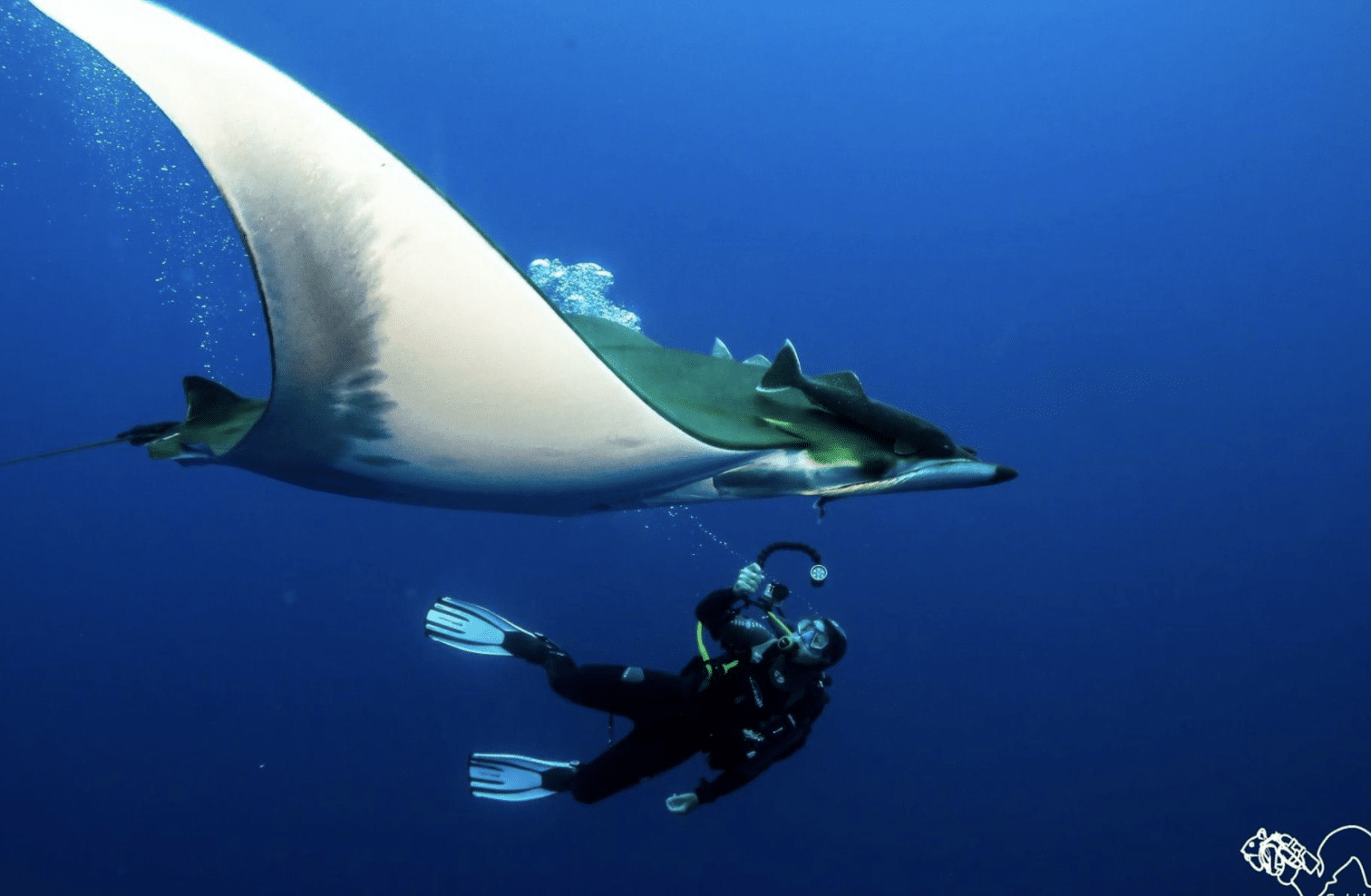Marine Life & Conservation Blogs
Top Destinations to dive with Manta Rays
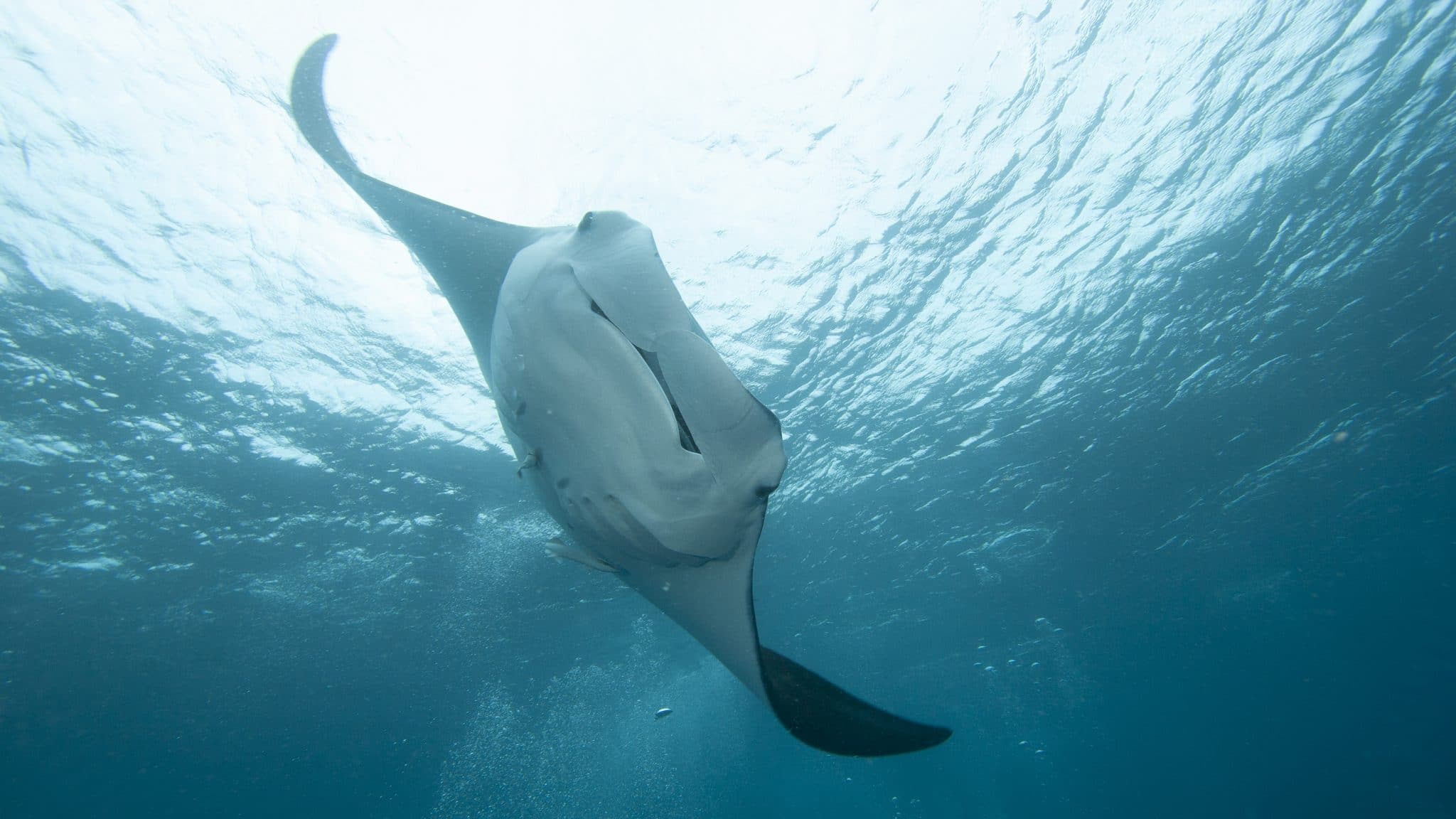
 In their mission to create a billion Torchbearers to explore and protect the ocean, PADI is encouraging divers to seek adventure and experience first-hand the vital eco-systems below the surface of the ocean.
In their mission to create a billion Torchbearers to explore and protect the ocean, PADI is encouraging divers to seek adventure and experience first-hand the vital eco-systems below the surface of the ocean.
To further raise awareness of this mission on International Manta Ray Day (17 September 2021), PADI has rounded up the top destinations in the world that are currently open to divers.
Machadilla National Park, Isla de la Plata, Ecuador
Diving in Ecuador offers a special paradise for scuba divers, in which the chance of encountering marine species nowhere else on earth is extremely high due to the heavy currents and nutrient rich waters. And for those keen to dive with manta rays, head out with PADI 5 Star Dive Center Exploramar Diving, or PADI 5 Star Dive Center Mares Ecuador here they take divers out to Machadilla National Park in Isla de la Plata for a chance to greet these graceful creatures every July to September.
Find out more with PADI’s Dive Guide for Ecuador
Kona, Big Island, Hawaii
Hawaii’s volcanic origins and isolated geographical location makes for a whirlwind of scuba diving encounters underwater, with manta ray encounters being likely all year long. For those looking for an extra special experience, PADI 5 Star Dive Center Jack’s Diving Locker offers a manta ray night dive and a PADI Distinctive Specialty Course called Manta Ray Diver, which covers everything from the manta ray anatomy to cleaning habits, reproduction and how to identify individual rays in the local population.
Find out more with PADI’s Dive Guide for Hawaii
Bryon Bay, Australia
For those who are currently in Australia, they can have their backyard manta ray encounter with PADI 5 Star Dive Center Sundive Byron Bay. The summer months of December to May bring manta rays to the nearby Julia Rocks Marine Reserve, which National Geographic once acknowledged as one of the top 20 dives in the world.
Find out more with PADI’s Dive Guide for Australia
Manta Point, Nusa Penida, Bali
The name speaks for itself. Manta Point in Bali is a haven for manta rays all year long, with the best time to see them being from April to May. PADI 5 Star Dive Center and Resort Scuba Junkie Penida offers the ultimate manta ray diving experience in the area, adding coral dives and drift dives to the day’s adventure.
Find out more with PADI’ Dive Guide for Bali
Komodo National Park, Labuan Bajo, Indonesia
One of Indonesia’s most famous diving destinations is also one of the best places to dive with manta rays! PADI 5 Star Dive Resort Blue Marlin Komodo is the perfect place for a manta ray holiday, where divers can stay at the dive resort while getting their PADI Open Water Diver certification and then hop aboard their dive vessel for a day of diving out at sea with manta rays!
Find out more with PADI’s Dive Guide for Indonesia
Six Senses Manta Point, Laamu Atoll, Maldives
Crystal clear warm waters, white sandy beaches and manta rays—PADI 5 Star Dive Resort Six Senses Laamu offers the ultimate luxurious manta ray holiday. As the only dive resort in the Laamu Atoll, divers of all levels will have extremely personable encounters with manta rays every month of the year in this world-class diving area. There are also more than 180 PADI Dive Centers and Resorts in the Maldives that can take divers out to have a manta ray encounter.
Find out more with PADI’s Dive Guide for the Maldives
Azores, Portugal
The islands that make up the Azores off the coast of Portugal are one of the most diverse for marine life. One specific type of manta rays known as the Mobula birostris is known tohang out in large groups around the island of St. Maria between June and October, with PADI 5 Star Haliotis Dive Center offering guided boat trips to the island.
Find out more with PADI’s Dive Guide for Portugal
Diving with whale sharks and manta rays can make a difference in protecting these incredible species for future generations – dive tourism encourages protection from local communities and governments. But its important to always adhere to local guidelines and best practices to ensure these creatures’ well-being is always at the forefront. PADI dive operators understand the importance of using the proper equipment, the time of day to dive with sharks, and the maximum number of operators that should be on the water at any given time. To learn more about responsible shark and ray tourism and other ways you can support the protection of these incredible animals, visit padi.com/aware/sharks.
Blogs
Saba’s Plan for a Coral Comeback

Saba has an exciting new initiative to restore its coral reefs. This new project, running from 2024 to 2026, will focus on reviving key species in the island’s underwater ecosystems. With a collaborative team from the Saba Conservation Foundation (SCF) and Van Hall Larenstein (VHL) University of Applied Sciences, the project aims to restore both corals as well as sea urchins.
This initiative is centered around coral restoration, specifically reviving two essential coral species—staghorn coral (Acropora cervicornis) and elkhorn coral (Acropora palmata). By mapping parent colonies and using a technique known as coral gardening, SCF will create and maintain coral nurseries. These corals will eventually be outplanted at key reef sites around Saba to not only expand the number of coral colonies, but also provide essential fish habitat. The project focusses on installing coral nurseries, training staff with the newest techniques and starting with the restoration of key reef sites.

Reef Cleaners to the Rescue
It’s not just corals getting a makeover—this project also shines a spotlight on the essential role of grazers, particularly sea urchins. VHL is leading the charge on cultivating and restocking two key sea urchin species, West Indian sea egg (Tripneustes) and long-spined sea urchin (Diadema), known for their ability to keep algae in check. By removing algae, which are important competitors of corals, they help the coral to thrive. By restoring these “reef cleaners,” Saba’s project will give corals the breathing room they need to grow, setting the stage for a healthier, more balanced marine ecosystem.
From Tiny Urchins to Big Goals
The project will be funded as part of the Dutch Government’s Nature and Environment Policy Plan (NEPP) 2020-2030 for the Caribbean Netherlands, a comprehensive initiative aimed at conserving and restoring the unique natural environments of the Dutch Caribbean islands, including Saba, St. Eustatius, and Bonaire. This project is aiming for big milestones: build and maintaining coral nurseries, the expansion of urchin cultivation facilities, and the creation of a dedicated research center. By 2026, the project hopes to ramp up coral and grazer restoration, with the ultimate goal of extending these efforts across the Dutch Caribbean. By linking local initiatives to broader regional goals, Saba’s restoration project promises to leave a lasting impact on both the environment and the community.
Find out more about the DCNA at dcnanature.org.
Blogs
Reef-World marks two decades of marine conservation: strengthening impact amid coral reef threats

Empowering ocean stakeholders to tackle future challenges and ensure the survival of coral reefs and humanity
2024 marks the 20th Anniversary of The Reef-World Foundation’s tireless efforts for global coral reef conservation. The UK charity is the international coordinator of the UN Environment Programme’s Green Fins initiative, known as the leading voice in sustainable marine tourism. Today, Reef-World released its 2023-2024 Impact Report outlining a year of substantive growth and impact in its marine conservation programmes.

Impact Report Highlights:
- Impressive improvements in environmental behaviours to protect coral reefs by the marine tourism industry as the global participation of Green Fins increases.
- Continued capacity building for government and NGO staff to effectively manage marine tourism activities in Asia, Caribbean and Red Sea regions.
- For the first time in Green Fins’ 20-year history, tourism operators have achieved ‘Best Environmental Performer’ status by demonstrating the lowest possible environmental impact in their environmental assessments. In 2024, three dive operators achieved this challenging milestone.
- Significant increases in global participation of Reef-World’s innovative digital conservation tools.
- 138 Green Fins dive operator members achieved the strict threshold for PADI Eco Center recognition.
- Developed four new educational materials and translated two into 16 languages to support the marine tourism industry in achieving sustainability targets.
- Establishing a new Reef-World Development strategy and recruiting new roles – Development and Programmes Managers.
- Reef-World’s board welcomes new Chair and Trustees strengthening organisational leadership.

Reef-World started as a one-person mission to inspire and empower communities to act in conserving and sustainably developing coral reefs and related ecosystems. Today, the team of 12 continues to meet this mission by inspiring and empowering the global marine tourism community to be exemplary sustainability leaders by using the Green Fins guidelines and tools to simultaneously use and protect the world’s precious reefs.
In April 2024, the fourth global coral reef bleaching event was confirmed. Reef-World’s work has never been more urgent as the marine environment, and the benefits they provide humanity, continue to be eroded by global threats. The reduction of local threats, like those from the marine tourism industry, is an essential step to ensuring a future where coral reefs survive and continue to support the millions of people who depend on their ecosystem benefits. Reef-World’s work buys time for coral reefs and related ecosystems to be resilient to the impacts of global threats.
“Right now our corals are facing the greatest fight of their existence as the terrifying predictions of the steps towards their complete extinction are starting to come true. But all is not lost, reefs are resilient and they have existed on this planet for millions of years. We must take action now, to buy time for reefs by reducing threats facing them and allowing them to react and adjust to the changing environment they need to survive in.” – Chloe Harvey, Executive Director
Looking Forwards:
Like coral reefs, the Reef-World team needs to be resilient in the face of the complex challenges of the conservation sector. Reef-World has invested significantly in developing a Culture of Care to ensure the well-being of its team on a daily basis, continuing to be an exemplary employer to enable its team to best achieve the mission for coral reef conservation.
With the foundations of a Culture of Care and organisational development laid, Reef-World is emerging from the end of a natural organisation life cycle, that brings the challenges of growth and scale, stronger than ever. With a new strategy in place to generate much needed resources, Reef-World is excited for the opportunities to leap forward, continue to scale our impact and lean into new innovations and untapped opportunities for marine conservation.
We continually strive to become a forward-thinking organisation that delivers on our goals and commitments to our stakeholders with fresh approaches and not being afraid of steering away from a “normal approach.” This approach is not only applied to our programmes of work but also internally and carries over to our Culture of Care for our team.” — JJ Harvey, Operations Director

The Reef-World Foundation is immensely grateful for the continued support of its grant funders: UN Environment Programme, IUCN’s Blue Natural Capital Financing Facility, Adventure Travel Conservation Fund, PADI Aware Foundation, and World Nomads Footprints Program.
Reef-World would also like to express its gratitude to international partners whose vital support has resulted in significant tangible benefits for our work and mission: PADI; Professional SCUBA Schools International (PSS); Explorer Ventures; 1% for the Planet; ZuBlu; Snorkel Venture, GSTC; Dive O’Clock; Seven Dragons; DiveAssure and Eco Beach, without whom these achievements would not be possible.
The full 2023–2024 Annual Impact Report is available on Reef-World’s website.
-

 News2 months ago
News2 months agoIconic SS United States to become the World’s Largest Artificial Reef
-

 News3 months ago
News3 months agoBook Review – 52 Assignments: Underwater Photography
-

 Gear News3 months ago
Gear News3 months agoDYNAMICNORD – New German diving brand enters the British market
-

 News3 months ago
News3 months agoExploring Cenote El Pit: A Diver’s Dream
-

 Gear News3 months ago
Gear News3 months agoTry BARE drysuits (and maybe even win one!) this Friday with Sea & Sea at North West Dive Fest
-

 Marine Life & Conservation3 months ago
Marine Life & Conservation3 months agoBook Review: Coral Triangle Cameos
-

 Blogs2 months ago
Blogs2 months agoDive the Egyptian Red Sea this Autumn with Regaldive
-

 News3 months ago
News3 months ago2024 Ocean Art Underwater Photo Competition Announced


